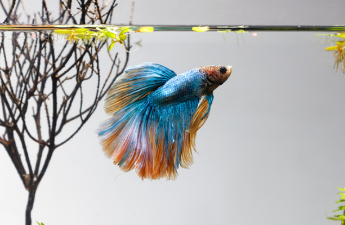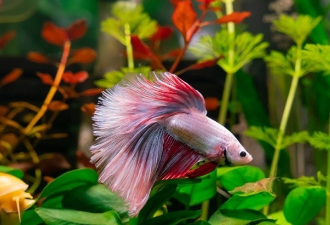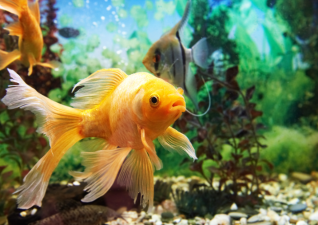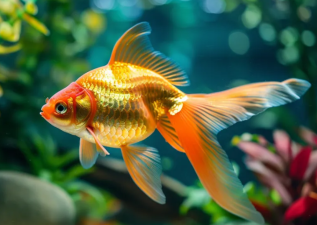Betta fish, a fascinating aquarium creature, has many varieties, such as Thai betta fish, Chinese betta fish, half-moon betta fish and horsetail betta fish. Before deciding to raise betta fish, you must first clarify the type of betta fish you love, because there are indeed differences in the breeding of different varieties of betta fish. It is crucial to choose a suitable fish tank, which needs to be spacious enough for the betta fish to swim freely. At the same time, the water quality in the fish tank must also be kept clean, and regular water changes are essential. In addition, suitable water temperature is also a key factor in the growth of betta fish, which is usually maintained between 24-28 degrees Celsius. Of course, during the breeding process, it is also necessary to pay attention to feeding food in moderation and ensure that the food is nutritionally balanced. Through these meticulous maintenance measures, we can create an ideal living environment for betta fish.


Betta fish, a fascinating aquarium creature, has many varieties, such as Thai betta fish, Chinese betta fish, half-moon betta fish and horsetail betta fish. Before deciding to raise betta fish, you must first clarify the type of betta fish you love, because there are indeed differences in the breeding of different varieties of betta fish. It is crucial to choose a suitable fish tank, which needs to be spacious enough for the betta fish to swim freely. At the same time, the water quality in the fish tank must also be kept clean, and regular water changes are essential. In addition, suitable water temperature is also a key factor in the growth of betta fish, which is usually maintained between 24-28 degrees Celsius. Of course, during the breeding process, it is also necessary to pay attention to feeding food in moderation and ensure that the food is nutritionally balanced. Through these meticulous maintenance measures, we can create an ideal living environment for betta fish.

◉ Water quality and water temperature management
Betta fish are relatively adaptable to water temperature and can survive in the range of 20 to 30℃, but the most suitable water temperature for its growth is 24 to 27℃. Meanwhile, in terms of water quality, betta fish prefer neutral water, i.e. pH value between 6.5 and 7.2. In artificial breeding environment, dissolved oxygen should be maintained above 5mg/l. In addition, the toxin content in water quality should be regularly monitored and adjusted to ensure the healthy growth of betta fish.
◉ Lighting conditions and container selection
In order to promote photosynthesis of aquatic plants, it is necessary to provide sufficient light. In a small glass tank, it is recommended to configure a small lamp with soft light. There is no special restriction on the size of the container for raising betta fish. You can use a large mixed aquarium or a small glass tank. However, due to the aggressive nature of betta fish, it is usually recommended to raise them alone to avoid them fighting.
◉ Special requirements for Chinese betta fish
Chinese betta fish are known for their aggressive nature and colorful colors. Their exaggerated appearance and strong fighting nature together constitute a unique charm. It is particularly worth mentioning that Chinese betta fish have labyrinth organs, which enable them to survive freely in low-oxygen environments. When breeding, a weakly acidic to neutral soft water environment is most suitable, and the temperature is maintained between 25-28 degrees Celsius. It is worth mentioning that the Chinese fighting fish is quite strong and can withstand a low temperature of 3 degrees, so it can be easily raised in winter without additional heating. Reproduction is also relatively easy, just provide floating water plants in a weakly acidic clean soft water at 28 degrees Celsius.
◉ Key points for breeding half-moon fighting fish
Half-moon fighting fish is suitable for growth at a water temperature of 20-25 degrees Celsius. The requirements for water quality are not strict. Usually the total hardness is maintained at 6-8GH and the pH is controlled at 6.5-7.5. Although half-moon fighting fish sometimes fight with each other, they can usually coexist peacefully with most small tropical ornamental fish. There is no special restriction on the size of the container for breeding half-moon fighting fish, from large mixed aquariums to small glass tanks. However, due to their strong fighting nature, it is usually recommended to breed them alone to prevent fighting. If you want to keep two male half-moon bettas at the same time to appreciate their majestic appearance, you can set up a glass plate and a non-toxic plastic plate in the fish tank for partition, which can meet the viewing needs without harming the fish.
◉ Common diseases and prevention methods

◉ Fungal infection and its prevention and control
When raising half-moon bettas, a common problem that may be encountered is fungal infection. This infection is usually manifested as grayish-white cotton-like substances on the fish body, which is a trace of mold growth on the fish body. Fungal infection may be related to poor water quality or failure to promptly treat fish injuries. In order to prevent and control fungal infection, it is necessary to regularly change the water in the aquarium to ensure that the water quality is clean, and pay attention to avoid fish injuries, and take timely treatment measures when signs of infection are found.
◉ Other disease prevention and control
In the process of raising half-moon bettas, you may encounter some common health problems. Understanding the symptoms of these problems and the corresponding prevention and control measures is crucial to ensure their healthy growth. Common half-moon betta diseases include but are not limited to saprolegniasis, white spot disease and fin rot, etc. These diseases are usually related to water quality, water temperature or nutritional status. These diseases can be effectively prevented and treated by regular inspections, keeping the water clean, controlling the appropriate water temperature, and providing a balanced diet.
◉ Mixing Betta with other fish
Betta, a lively and aggressive fish, does require some thought when mixed. How to make them live in harmony with other fish and which species of fish are suitable for keeping with Betta are all headaches. Some netizens tried to put fluorescent red zebras, balls, red and green lights, and 4 active black skirts in the fish tank. It was found that Betta mainly swam around trees and was restrained from red and green lights, while black skirts posed a threat to it and often chased it. In the end, the whole aquarium presented a harmonious atmosphere, and occasionally there would be only scenes of black skirts chasing Betta.
◉ Precautions for raising Betta fish
There are many key details that need to be carefully grasped in the process of raising Betta fish. Avoid turbulent water, change water moderately, prevent direct sunlight, provide suitable aquatic plants and breeding environment, and pay attention to safe operation. Betta fish should not be exposed to direct sunlight. If it cannot be avoided, appropriate shade should be provided. Be careful not to use water directly to hit the gill cover of the betta fish, so as not to damage its respiratory organs. It is also extremely important to provide suitable aquatic plants and breeding environment. Although betta fish have a certain resistance to adversity, good feeding and management are essential for their health and vitality. As owners, we should take good care of them so that betta fish can show their unique charm.



